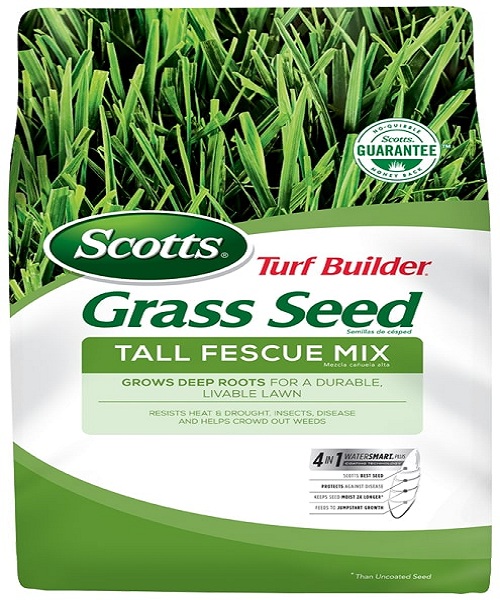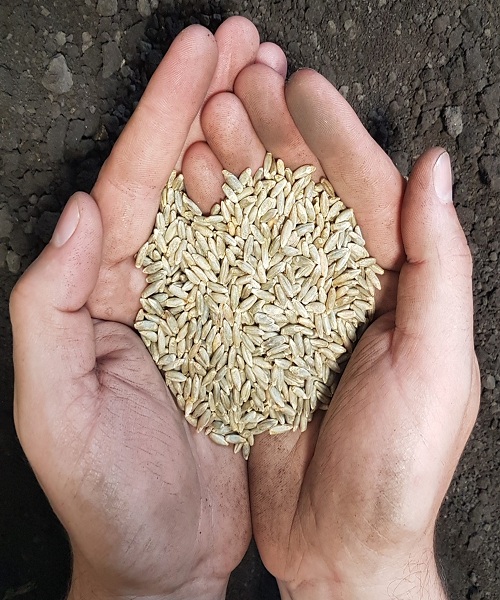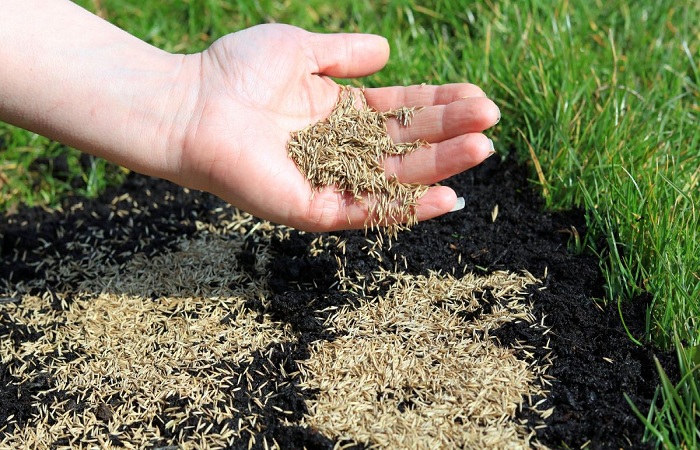It can be a real challenge to get grass seed to germinate. Even more so if Mother Nature doesn’t give enough rain, or even if she gives too much.
That begs the question: Is there a trick to successfully germinating grass seed? There most certainly is! And it’s one we discovered a few years ago that’s made cultivating grass seed a piece of cake.
How to grow grass seed: The Basics? It goes without saying that there are a few “must-haves” right off the bat if you want your grass seed to take. Unfortunately, if you don’t have the “must-haves,” the grass won’t grow well under any conditions, whether you use a hidden method or tip or not.
How to Grow Grass: The “Must-Haves”
First and foremost, you need to choose a premium seed mixture. Choosing the right seed blend for your region is also crucial.
Obviously, if you happen to be in the middle of Florida, you won’t be able to plant the kind of cool season grass that thrives in the northern states. Likewise, warm-season grass will struggle to thrive in a cooler environment. Not if you want your grass seed to flourish, that is!
It is important to choose a combination of grass seeds rather than a single type of seed, but picking a good seed that is suited for your environment is also crucial. Seeds of Kentucky Blue Grass are a good example of this.

Why Grass Seed Blends are the Best Option?
When it comes to cultivating a lush and green lawn, many lawn experts and enthusiasts agree that Kentucky Blue grass is your best bet. However, Kentucky Blue presents a number of challenges when grown in isolation. And it can quickly fail if you don’t keep an eye on it.
The roots of Kentucky Blue Grass aren’t very deep. Kentucky Blue has a hard time surviving in prolonged heat when the entire field is planted with it. Since it has scant protection due to its superficial root system, nothing will aid it. In addition, it is also more sensitive to disease. That’s especially true if it’s the only kind of grass in your yard.
The Companion Concept
As with growing vegetables in a garden, it’s risky to rely on only one type of produce. Why? Once an infestation or illness has taken root, there is no way to stop it. And there aren’t any companion plants to aid the grass kind out.
Lawns and grass seed both function according to the same principle. When planted alongside a fescue seed blend, Kentucky Blue grass not only survives but flourishes.
The fescue’s taller stems and deeper taproots shield and fortify the Kentucky Bluegrass seedling. And the fescue gains something from the Kentucky Blue as well.
Investing in better seeds will make a huge difference. The key is to use a blend as opposed to single grass seed and to make sure it is good for your area, but there are plenty of other great seed mixes available as well.
Now that you know the basics of planting grass seed, you can check out this insider tip for guaranteed thick, lush growth every time.

The Little Secret to Growing Great Grass Easily: Annual Rye!
It might be the best thing you can do if you plant annual rye along with your regular grass seed. Rye grows quickly, especially in the early fall when the soil is still warm. And because it grows quickly, it helps the fescue seed mix get covered right away.
As the rye takes hold, the fescue grows thick and lush in between. Weeds don’t grow because the rye quickly covers any bare soil. The roots of the rye also help break up the soil below, which made it easier for the fescue to grow. It also helps keep the seed moist and gives it shade to keep it cool as it grows.
Even better, annual rye is one of the few crops that can actually help fix nitrogen levels in the soil. And that means that the grass seed can get more nutrients as it grows. A win-win situation!

The Grass Seeds Take Over
After being cut a few times, the annual rye starts to die, as it should. As it does this, the fescue keeps taking hold and getting thicker. It’s a process you should follow whether you’re seeding a small area or a big chunk of your lawn. And it works every time.
So the next time you need to fill in a small patch of your lawn, try the annual rye trick.

